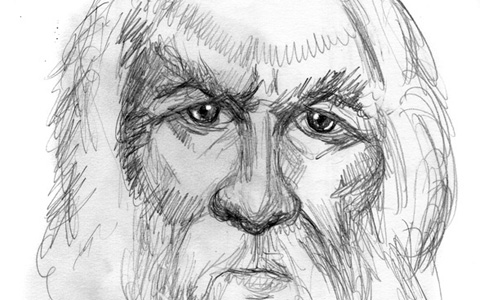There was no evidence of misery or pain. Her sleeping face was still, the fever invisible and her riotous bowels at rest.
Earlier in the day, her small head had leaned against my shoulder, burning and sweaty. It was my first experience of having a child sick enough to cause me to worry. Her misery during her waking time made me miserable too. I was powerless to do more than clean up her messes, change her diapers, and hold her.
I couldn’t take her pain away; I couldn’t make her better. All I could offer were drinks and a cool washcloth and my arms.
At one point, unable to do more than think while my arms were full of child, I remembered a trip we made to Children’s Hospital six months before to have a CT scan of her skull. The pediatrician was concerned about bone growth, and that day at Children’s changed my life as a mother.
As we left, a boy in Superman pajamas, bald and smiling, was racing through the lobby. He was so joyful as he ran, as if he was really Superman. The sun was bright that day, and the flowers were sizzling outside in the summer heat.
In the radiology waiting room, a tiny baby was hooked up to oxygen, which the mother carried in a little fanny pack. The baby slept in her arms, oblivious to the fact that oxygen is available in a much different way for most of the rest of us.
Then there was the child in the wheelchair, whose head was just wrong somehow—too big, slanted to the side, not dimensionally correct. But he was smiling, and I couldn’t help but smile in reply to his sweet, inviting face.
Those parents would love to have something as normal as a weeklong virus. How, I wondered, did they cope with their children’s pain? How many times did they simply hold their children and pray, turning to God with their own agony and wondering how they would keep going?
I have turned to Mary many times since becoming a mother, but it was during the experiences of my children’s suffering that I received a glimpse of how well she really can comfort me. Like me, she stood there unable to help in any tangible way, having watched helplessly as He carried His cross and seeing the evidence of His torture.
What were her prayers in those moments? Who comforted her?
I picture Mary holding me as Comforter of the Afflicted. She offers me her arms and a comfort that’s far beyond just a prayer. She is both mother and intercessor, holding me as she looks over my head to her Son.
She knows the strife and pain of this life on earth. Not only did she experience it, but she stays involved from her home in heaven.
Getting to heaven, she reminds us, involves a journey across Calvary. Her embrace does not negate the hurt, the throbbing, the loss. Instead, it absorbs all we can imagine.
Just as a friend who’s been through a similar experience can offer wisdom that touches our hearts, so Mary, Comforter of the Afflicted, gives us an example and a shoulder, one that we can come back to again and again.















